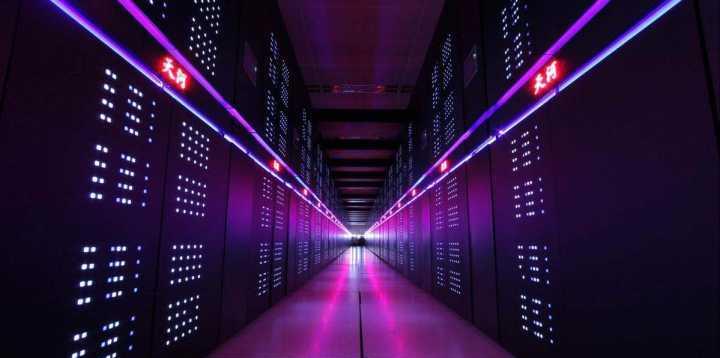Supercomputer technology is considered to be a sign of a country's scientific and technological level and even the level of comprehensive national strength development, but also more and more attention by various countries, the mainland Tianhe-2, Shenwei Taihu Light and other computers have been ranked among the top in the world supercomputing rankings, our South Asian neighbor India has also put forward its own development plan on supercomputing, has created a number of "independently developed" supercomputers.

On February 7, the journal "Post and Telecommunications Design Technology" reprinted a report from the Australian magazine "Theregister" on the same day, saying that the Indian Institute of Science (IISC) recently installed and debugged a new supercomputer, named Param Pravega, with a total supercomputing power of 3.3 gigabits, is the country's first gigabit supercomputing, and its peak processing speed per second has reached 3.3 trillion floating-point operations, and the Indian media said that the supercomputer is on the South Asian subcontinent." The most powerful and largest computer", will connect into the national supercomputing grid.
This computer is part of India's National Supercomputing Mission (NSM), designed by the Advanced Computing Development Centre of India (C-DAC), and built in-house a software stack based on CentOS 7.x, which was developed by India to meet its official initiative to encourage "Made in India", but the hardware of the computer is not the case, and the most important chips and other components are purchased from abroad!
NSM plans to install more than 70 supercomputing facilities in Research institutions in India, so the country has also made great efforts in supercomputing research, after India's Pratyush supercomputing ranked 63rd in the world's top 500 supercomputers in November 2019, a supercomputer developed by India's Cray/HPE in 2018, with a peak floating-point speed of more than 400 billion times, but this time the Computing power of Param Pravega supercomputing has increased by nearly 10 times. It is an unprecedented achievement in India's supercomputing.
India is a country that has always had the dream of being a great power, and everywhere likes to compare with the mainland, thinking that China can build it too! So how does this computer, which the Indian media calls "the strongest supercomputer in the South Asian subcontinent," compare with the world's and the continent's top supercomputers? In fact, there is still a gap in ability! At the end of 2021, the world's top 500 supercomputer is still Japan's "Fugaku", with a peak floating-point computing power of 5.37 billion times, which is the only supercomputer on the list that has reached the semi-E level, and the peak computing power is more than 160,000 times that of India's Param Pravega supercomputer.
The second and third places on the list are the "Apex" of Oak Ridge National Laboratory and the "Ridge" supercomputer of Lawrence Livermore National Laboratory, the fourth and fifth places are the Shenwei Taihu Light and Tianhe II of the mainland, respectively, and the peak speed of the double-precision floating-point operation of Tianhe II reaches 549 million times per second, which is Param of India Pravega supercomputing is 16,700 times faster, or the latter is close to one-ten-thousandth of the former, so the latter is still unable to compare with the mainland's Tianhe-2, and its computing power is not as good as the computing power of the Tianhe-1 launched by the mainland in 2009 (the peak speed of floating-point operations per second is 4.7 trillion times).
The peak speed of the Shenwei Taihu Light supercomputer of the mainland can reach 1.254 billion times per second, which is 38,000 times that of the Param Pravega supercomputer in India, or the latter is close to one-30,000th of the computing power of the mainland Shenwei Taihu Light supercomputing.
In addition, there are three real E-level supercomputers in the true sense (floating-point operation peak speed of tens of billions of times), namely Shenwei E-level supercomputing, Tianhe No. 3, Shuguang E-level supercomputing, their computing power is stronger, at least 10 times the supercomputing power of Shenwei Taihu Light, it is speculated that these three have entered the normal work stage, but there is no news of the normal operation of these three supercomputers, and no computer data has been submitted to participate in the world's top 500 supercomputing rankings. Given the technical blockade of the mainland by some countries on high-end devices such as chips and lithographs, this may also be a last resort.
Although the current technical level of Indian supercomputing is still relatively low, it has a sense of independent development and has made great efforts, which is a correct path, but if you want to catch up with the world-class supercomputing technology level, it is still a long way to go.
Resources:
"Global Network" February 9 article "India launched a new supercomputer, peak computing speed up to 3 trillion times"
The return time of Shenzhou XIII was determined, and the first rapid return plan was used, and the 6 capsules of the space station were integrated at the end of the year
Venus's searchlight? The Parker probe photographed the surface of Venus, and a mysterious bright spot sparked speculation
Musk's 49 star-chain satellites were just in the sky, and 40 were destroyed by a magnetic storm
Pan Jianwei has made a new achievement, this time not a quantum computer, but a Nobel Prize-level discovery in physics